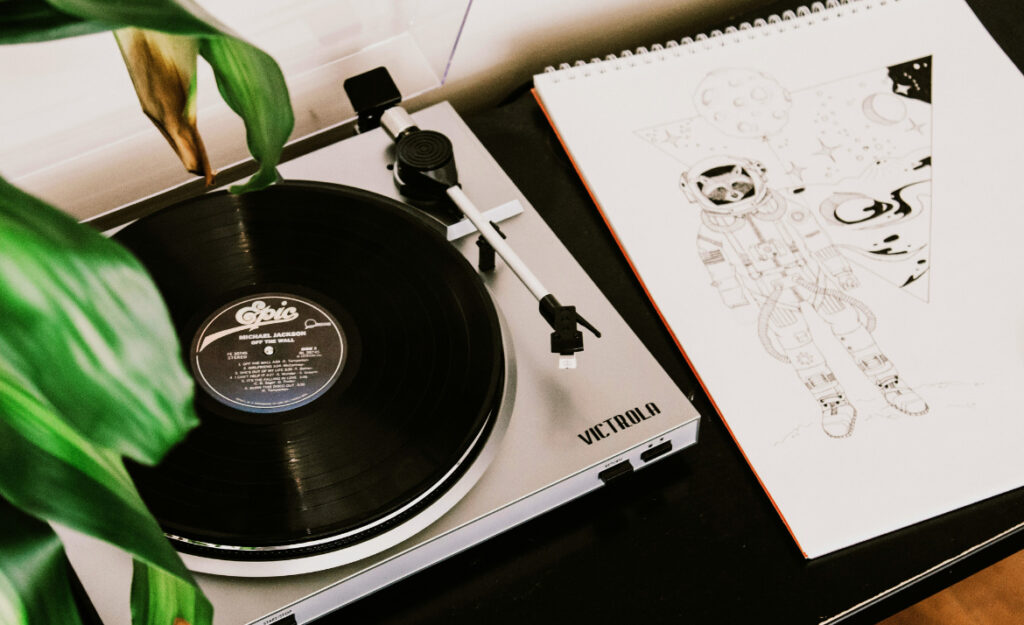
Anybody who’s spent time with vinyl knows that something magical happens when music fills a room from a spinning record. Amid the nostalgia and analog warmth, turntable speed stability quietly shapes every note, impacting audio quality at a fundamental level.
Reliable speed isn’t a detail reserved for experts—any record listener can spot the difference between wavering pitch and consistent playback. That’s why this hidden factor matters not just for audiophiles but for anyone who loves their vinyl collection.
This article walks you through the practical elements that determine turntable speed stability, hands-on care steps, and the tools that keep your records sounding clear and natural, inviting a satisfying listening experience.
Setting a Strong Foundation for Accurate Playback
Building reliable turntable speed stability starts with a solid physical setup and well-chosen gear. Each decision—from support surfaces to drive systems—directly influences how steady your records spin.
Most turntable owners can improve playback accuracy by checking for level placement and limiting vibrations. These foundational steps ensure the drive motor and platter are free to perform their best.
Choosing an Effective Surface for Stability
Place your turntable on a rigid, flat surface like a dedicated platform or sturdy furniture. A wobbly table or uneven shelf introduces subtle shifts that throw off speed regulation and pitch.
Opt for surfaces away from speakers and high-traffic areas. Physical isolation reduces unwanted feedback and helps maintain speed, especially during bass-heavy tracks or loud volumes.
Imagine a kitchen scale—accuracy drops if the base rocks slightly. Similarly, stability beneath your turntable means consistent playback across your entire record collection.
Identifying Your Turntable’s Drive Type
Turntables use belt-drive, direct-drive, or idler-wheel systems—each has trade-offs for speed stability. Understanding your unit’s drive type guides proper care and upgrade choices.
Belt-drives rely on a rubber belt for smooth transmission. Over time, belts can stretch, causing wow and flutter. Direct-drives use electronic regulation, reducing mechanical slippage but potentially subject to electrical speed variation.
Check your model’s specifications. When troubleshooting instability, knowing where drive irregularities originate will help you correct them quickly and accurately.
| Drive System | Strength | Common Issue | Next Step |
|---|---|---|---|
| Belt-Drive | Smooth sound, less noise | Belt stretching, slipping | Inspect and replace belt every 1–2 years |
| Direct-Drive | Speed accuracy, quick start/stop | Electronic speed drift | Recalibrate or contact support if speed drifts |
| Idler-Wheel | Vintage tone, robust design | Wheel degradation, rumble | Clean or replace idler wheel as needed |
| Belt + Servo | Hybrid control, improved stability | Sensors aging, belt wear | Check sensors and belt together annually |
| Quartz-Locked Direct | Exceptional pitch stability | Electronics failure | Have repairs done by a qualified technician |
Tuning Your Turntable’s Speed to Perfection
Precise adjustment makes turntable speed stability repeatable and measurable. Anyone can calibrate their deck using onboard controls, reference tools, or a basic strobe disc. Here’s how to get concrete results in your own setup.
The first step is to identify whether your turntable includes built-in pitch adjustment. Models with a pitch control slider or trim potentiometer allow for hands-on tweaks to reach the gold standard: unwavering 33 1/3 or 45 rotations per minute.
Locating and Using Pitch Controls
Pitch controls are usually found near the platter or on the side of the deck. Adjust in small increments, listening for static pitch free from warbles. Quick, aggressive changes can overshoot or introduce drift.
- Turn the control slowly, visually referencing a strobe disc or app.
- Compare pitch to a digital recording for confirmation.
- If unsure, reset to center and start again.
- Test with sustained vocals—human ears pick up pitch shift fastest.
- Finish with a musical track you know well to catch any anomaly.
A perfectly adjusted pitch means even sustained piano notes hold steady, helping music sound richer and more lifelike every time you play a record.
Using Diagnostic Tools and Apps
Modern smartphone apps can measure RPM with surprising accuracy. Place your phone’s mic close to the platter (never on it) and check for speed deviations on the real-time readout. This hands-off method avoids introducing new instability.
- Download a trusted RPM app that matches your platform.
- Begin with the stylus lifted, then let the platter spin at selected speed.
- Hold your phone firmly between turntable and speakers; don’t let it vibrate.
- Record speed readings for 30 seconds to reveal trends.
- Note any outliers or wobbles—more than 0.5 RPM may require intervention.
Use results to guide further tweaks, mark progress after belt or bearing changes, and keep a log for reliable long-term tracking.
Consistent Maintenance Routines Elevate Playback Quality
Regular maintenance ensures that turntable speed stability remains predictable and robust. Simple monthly checks for wear and lubrication prevent small issues from compounding into erratic playback or irreversible damage to your records.
Adopt these practical care steps as part of your vinyl listening ritual, so every spin retains that analog magic you expect.
Cleaning Your Belt and Pulley
Dirt, dust, and natural belt residue reduce grip, letting the platter slow down or stutter. Clean belts and pulleys with isopropyl alcohol every few months. Never stretch or kink the rubber—gentle tension preserves both function and life.
Inspect for cracks or gumminess every time you clean. Replace at any sign of aging, since a fresh belt provides tighter RPM consistency and prevents transitional drift across sides or albums.
Keep pulleys clear of dust or loose lint that could slip beneath the belt. Wipe gently with a lint-free cloth and avoid wet cleaners on motor components.
Lubricating Bearings and Spindle
Bearings allow the platter to rotate smoothly around its axis. Lack of lubrication introduces micro-seizing, felt as momentary resistance or random pitch dips.
Use only manufacturer-recommended oil—WD-40 or common oils gum up precision parts. Apply a drop or two to spindle bearings each season, rotating the platter by hand so oil distributes evenly.
Check for any grinding or audible friction. If present, stop playback and inspect immediately. Consistently lubricated assemblies keep rotations glassy-smooth and reduce noise on quiet passages.
Inspecting Motor Couplings
Turntable motors are coupled to the platter by rubber or direct mechanical links. Worn couplings degrade torque transfer, letting speed wander between stylus drops.
During cleaning, look for sagging, misshapen, or visibly fractured couplings. Subtle irregularities may be felt by spinning the platter by hand and feeling for periodic resistance.
Order replacements from your turntable brand or a specialist parts supplier if you find issues. A healthy coupling locks in turntable speed stability, securing satisfying sound across every genre.
Recognizing and Addressing Sources of Unwanted Vibration
Taking proactive steps to reduce mechanical vibration keeps your turntable speed stability consistent and your listening sessions stress-free. Even small vibrations introduce flutter, especially during low frequencies or dynamic musical passages.
Hint: Imagine riding a bicycle with a wobbly wheel. Vibrations travel up, causing your ride to feel unsure. With records, the principle holds true. Here’s what to look for and adapt:
Deploying Isolation Feet or Platforms
Inexpensive isolation feet or dense platforms underneath your turntable absorb unwanted motion from footsteps and speaker bass. Position your deck so it rests on these supports rather than bare shelves.
An audiophile might notice immediate gains: notes sound truer and percussion sharper, minus the background warble of external shake. This effect is similar to using padded mats beneath equipment racks.
Choose materials that compress slightly—dense rubber or synthetic cork works well—matching the size of your turntable’s weight and footprint.
Mitigating Airborne Vibrations from Speakers
Keep speakers and subwoofers decoupled from the turntable surface. If both rest on the same shelf or table, airborne bass shakes the record, adding subtle, swirling speed deviation.
If repositioning speakers isn’t practical, small foam or cork risers provide an easy fix. Even a few inches of separation can dramatically quiet down the playback environment.
A listener noticing sudden shifts in pitch after turning the volume up can experiment here first. This small change can restore clarity and even imaging in your records.
Signs of Speed Instability and How to Tackle Them Immediately
Rapid detection and correction of turntable speed instability prevent further wear of your equipment and protect your records from unnecessary stress. Stay alert for telltale signs and use these response strategies as soon as a problem appears.
Visible strobing lines on the record edge that drift out of sync, or vocals that tremble unevenly, both indicate speed deviation. Immediate intervention stops small issues from becoming persistent annoyances.
- If you hear pitch wandering within a song, stop playback and check for belt slippage; replace if stretched or sticky.
- Feel vibration on the platter surface. Remove heavy dust covers or relocate the turntable to reduce interference.
- Observe sudden slowing or acceleration. Power cycle your turntable to reset its start circuit and check for obvious faults.
- Look for subtle warping in the platter or mat. Warps cause micro-alterations in rotation speed; replace or flatten as needed.
- Notice heat or burning smell from the motor. Disconnect power and consult a technician immediately for diagnosis.
Addressing these points promptly ensures that your system maintains its designed speed and preserves the fidelity of your collection over years of use.
Environmental Factors That Quietly Affect Speed Precision
External conditions—like temperature, humidity, and location—shape the mechanical behavior of your turntable. Adjusting your habits and environment strengthens turntable speed stability day to day.
Records and equipment live longest in cool, dry spaces. Sudden changes make belts brittle, and excess moisture lets dust and residue build up on moving parts, resulting in stick-slip during playback.
Protecting Your Turntable from Room Variations
Avoid placing your turntable near windows, heaters, or vents. Drastic temperature swings shrink or expand rubber belts, damaging their ability to keep steady tension on the platter’s spindle.
Humidity over 50% can cause both metal components to corrode and rubber slipmats to lose grip. Use a small dehumidifier or keep silica gel packets nearby when storing records in especially damp rooms.
Leaving the deck uncovered in these settings risks moisture entering spindle bearings, introducing noise and sticking that eventually cause rotational speed loss.
Conclusion: Sustaining Vinyl Excellence Through Turntable Speed Mastery
The key steps in achieving turntable speed stability—careful setup, hands-on maintenance, and awareness of environment—combine to deliver timeless, high-fidelity playback with every record.
As listeners, taking ownership of these processes makes every spin an opportunity for sonic clarity, dynamic range, and enjoyment closely linked to the era of analog sound.
Consistency in caring for your equipment, applying these practical rituals, and observing changes in your own playback system ensures that vinyl’s character remains front and center for years to come.



